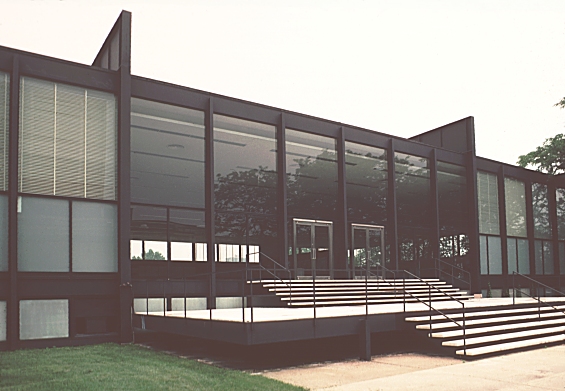MIES AND HIS PROJECTS
Mies van der Rohe started his career inside the Avant-Garde styles, joined the Expressionism and the Neoplasticism.BARCELONA PAVILLION
Mies built the German (or Barcelona) Pavilion for the Barcelona International Exposition of 1929. It housed the ceremonial reception space for German industrial exhibits commissioned by the German government. Mies united sophisticated materials with a fluid open plan, which together endowed the space with an unprecedented modern elegance. The architecture's mass is balanced by a pond (featuring a sculpture by Georg Kolb) and a shallow pool on either end.UNITED STATES
Mies left Germany in 1938 to head the Armour Institute, which later became the Illinois Institute of Technology. Many members of the Bauhaus, including Joseph Albers, Walter Gropius and László Moholy-Nagy, also moved to the United States at this time.It was in the United States that Mies had his most prolific period, both in terms of the number of projects he was able to build and in terms of the number of followers and disciples he influenced, either directly or indirectly. During this period, he transformed what had been primarily a pragmatic construction technique for large buildings, the steel frame, into a refined art form in which the steel itself became one of the primary expressive elements. At the same time he monumentalized his abstraction of space, moving away from the dynamic, pin-wheeling forms of his 1920’s works, and returning to a more severe classicism, with cubic volumes, often raised over carefully paved plazas and asymmetrically balanced against surrounding buildings. Such classicism, however, was interpreted in a radically modernist manner, with the transparent walls and continuous ceiling planes extending sight lines beyond the interiors, in the attempt to represent infinitely receding space.

“In its simplest form architecture is rooted in entirely functional considerations, but it can reach up through all degrees of value to the highest sphere of spiritual existence into the realm of pure art.”
This sentence summarized what had become Mies van der Rohe’s consistent approach to design: to begin with functional considerations of structure and materials, then to refine the detailing and expression of those materials until they transcended their technical origins to become a pure art of structure and space.

Comentarios
Publicar un comentario